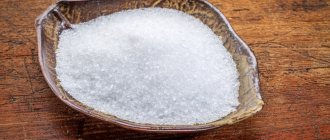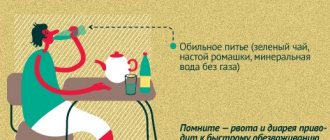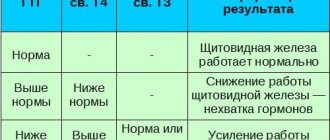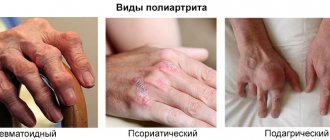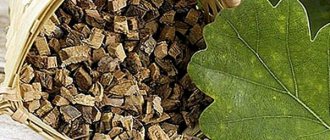Pharmacodynamics and pharmacokinetics
Formula of Barium Sulfate ( barium sulfate ): BaSO4 . The substance is obtained by reacting oxide , hydroxide or peroxide with H2SO4 or highly soluble sulfates . On an industrial scale, the substance is obtained from heavy spar , which is a natural mineral.
The drug is a good radiopaque agent , is not absorbed from the gastrointestinal tract and does not enter the systemic circulation. The substance absorbs X-rays to a much greater extent than various tissues of the body, envelops the gastrointestinal and facilitates the study of the microscopic relief of the mucous membrane.
Barium Sulfate for fluoroscopy , unlike other barium compounds, has very low toxicity. Maximum radiopacity in the esophagus, duodenum and stomach is achieved almost immediately after taking barista porridge . The drug reaches the small intestine in 15 minutes to one and a half hours; the colon may reach later, depending on hydrostatic pressure , the patient’s body position and the viscosity of the prepared suspension.
Commercial barite
In practice, the starting material for obtaining commercial barium sulfate, intended for use in drilling fluids when drilling oil and gas wells, is, as a rule, the mineral barite.
The term “primary” barite refers to commercial products, which include raw material (obtained from mines and quarries), as well as products of simple beneficiation by methods such as washing, precipitation, separation in heavy media, and flotation. Most raw barite requires refinement to a minimum purity and density. The mineral used as a filler is crushed and sifted to a uniform size so that at least 97% of its particles are up to 75 microns in size, and no more than 30% are less than 6 microns. Primary barite must also be dense enough to have a specific gravity of 4.2 g/cm3 or higher, but soft enough not to damage bearings.
Contraindications
Barium sulfate is contraindicated for use:
- if you are allergic to the substance;
- the person has impaired swallowing function;
- if the integrity of the walls of the gastrointestinal tract is compromised, there are perforations or esophagotracheal fistulas ;
- with intestinal obstruction;
- if there is bleeding in the gastrointestinal tract ;
- for cystic fibrosis ;
- if the body is dehydrated;
- for acute diverticulitis or ulcerative colitis ;
- patients with bronchial asthma or persons with a history of allergic diseases;
- during pregnancy .
Overdose
Currently, there are no clinical manifestations of drug overdose. There may be a delay of the suspension in the digestive tract, which is possible against the background of intestinal obstruction, acute dehydration, impaired motor function of the digestive tract, as well as excessive consumption of the substance if the dosage regimen is not followed.
This condition can be manifested by sedimentation of the substance on the intestinal walls, which can complicate subsequent x-ray diagnostics. In addition, patients with decreased motor function may develop constipation.
Therefore, to prevent them, it is necessary to drink a sufficient amount of clean water for 2-3 days. The average volume of liquid that must be taken to accelerate the elimination of barium is from 1.5 to 2 liters.
Instructions for Barium Sulfate for fluoroscopy (method and dosage)
The drug is taken orally in the form of water-based suspension
To do this, the suspension should be prepared immediately before the study.
Barium sulfate is mixed with warm water in a ratio of two to one or four to one. For children - one to two. Then the pulp is mixed for 5 minutes (you can use a mixer).
The dosage for one study in an adult is 300 ml, in a child – up to 100 ml.
barium porridge through the mouth or tube (directly into the stomach).
When performing double contrast in the upper gastrointestinal sorbitol and sodium citrate are added to the mixture .
When examining the colon, the suspension can be administered as an enema. tannin solution (0.5%).
Paint and paper industry
Most synthetic BaSO4 is used as a component of the white pigment for paints. Thus, blancfix mixed with titanium dioxide (TiO2) is sold as a white oil paint used in painting.
The combination of BaSO4 and ZnS (zinc sulfide) produces an inorganic pigment called lithopone. It is used as a coating for certain types of photographic paper.
More recently, barium sulfate has been used to brighten paper intended for inkjet printers.
special instructions
It is not recommended to eat solid food 20 hours before and 20 after the procedure.
If the drug is administered rectally , then before administration you can eat soft food. Immediately before the examination, Bisacodyl (suppository) is administered rectally.
Immediately after the X-ray contrast examination, it is recommended to drink more fluids to speed up the process of removing Barium Sulfate .
The product can be used to study intestinal motility in children.
Also, to conduct double contrast in adults and older children, the patient is given 2-3 grams of baking soda and 1-3 grams of citric acid .
The duration of passage of the small intestine in children is from 60 to 120 minutes. The suspension passes through the colon in 4 hours, which significantly reduces the radiation dose to the body.
In what form is it produced?
Barium for stomach x-rays is available in the form of a homogeneous, odorless, white powder.
The product is presented on the pharmaceutical market in plastic bags, cardboard boxes, and plastic containers. Regardless of the packaging, barium is packaged in 100 g units. This volume is sufficient to prepare a single dose of the finished suspension.
The drug can also be produced in the form of an aqueous suspension, which contains stabilizing additives. This can be gelatin, starch or polyvinyl alcohol.
Thanks to the presence of these components, barium sulfate becomes more dispersed, adhering better to the walls of the digestive tract
Barium Sulfate Price
Buying Barium Sulfate at a pharmacy will cost approximately 14 hryvnia per 80 grams of powder for diluting the suspension.
- Online pharmacies in RussiaRussia
- Online pharmacies in UkraineUkraine
LuxPharma* special offer
- Barium sulfate for x-ray.
por. d/p suspension 80 g 1300 rub. order
show more
Pharmacy24
- Barium sulfate 80 g powder TOV "Istok-Plus", m. Zaporizhzhya, Ukraine
30 UAH. order
Physical properties
Since BaSO4 is a salt of sulfuric acid, its physical properties are determined in part by the metal itself, which is soft, reactive and silvery-white. Natural barite is colorless (sometimes white) and transparent. Chemically pure BaSO4 has a color from white to pale yellow, it is non-flammable, with a melting point of 1580°C.
What is the mass of barium sulfate? Its molar mass is 233.43 g/mol. It has an unusually high specific gravity - from 4.25 to 4.50 g/cm3. Given its insolubility in water, its high density makes it indispensable as a filler in aqueous drilling fluids.
Drug interactions
Since barium sulfate is an insoluble substance, no agents have been identified in clinical practice that can interact with drugs.
It is not recommended to combine barium sulfate with other oral medications. This is explained by a possible decrease in the activity of the drug due to the deposition of barium drug suspension on the surface of the mucous membrane.
Side effects
Barium for X-rays of the stomach or other organs of the digestive tract rarely leads to the development of adverse reactions. Their appearance is associated with a violation of the dosage regimen, the patient’s hypersensitivity to the main active ingredient, as well as the use of the drug against the background of contraindications for use.
All adverse reactions are divided into those that are rare and extremely rare in clinical practice.
The first group includes:
- The development of diarrhea, which goes away on its own or is easily amenable to therapeutic intervention;
- disruption of the functional activity of the digestive tract with a tendency to constipation;
- the appearance of spasmodic pain.
Very rarely, patients may note:
- The development of allergic reactions, which can manifest as polymorphic rashes, skin itching and redness. In rare cases, reactions resembling anaphylactic shock are possible, for example, swelling of the mucous membranes with a feeling of shortness of breath.
- Increased pain in the abdominal area.
- Abdominal bloating followed by pain.
- The appearance of nausea and vomiting that occurs immediately after consuming the substance.
- Constipation, which is difficult to respond to drug therapy and is accompanied by the development of intoxication.
- Development of “barium” appendicitis.
If adverse reactions occur that are associated with the use of barium for radiography, you should seek help from your doctor. Attempts to independently eliminate the problem are prohibited due to the high risk of complications, which, in some cases, pose a threat to the patient’s life.
Analogs
There are various drugs on the pharmaceutical market that have a similar composition or mechanism of action to barium sulfate.
Among them are:
| Gastrografin | A drug used for radiography, which is available in the form of a solution. It contains iodine, sodium amidotriosate, megluminamide trizoate as the main components. It is available in bottles with a volume of 100 ml. The product is used in cases where barium sulfate is contraindicated for use. In addition, it is prescribed for the treatment of meconium ileus, or early diagnosis of perforation or anastomotic failure. In CT scans, it is combined with barium to produce more accurate images. The main limitations to its use are pathologies of the thyroid gland due to the iodine content. It is also not recommended for use in patients of young childhood. The average volume of a single dose is 100 ml, which can be used orally or rectally. |
| Iodolipol | X-ray contrast agent, available in the form of iodized oil in ampoules of 5 to 20 ml. Iodolipol is insoluble in water and slightly soluble in alcohol-containing media. In clinical practice, it is used for radiopaque purposes to examine the bronchopulmonary system, as well as the uterus and appendages. The single dose is determined individually, taking into account the research method and the age of the patient. When examining the bronchi, up to 20 ml of solution is used for adult patients, and up to 3-4 ml of the uterus and fallopian tubes. Use is contraindicated against the background of inflammatory processes, as well as the patient’s serious condition. Due to the iodine content, it is necessary to be careful when using the drug for diseases of the thyroid gland. |
The use of barium for X-rays of the stomach or other organs of the digestive tract can increase the diagnostic value of the method. Also, the low cost and availability of the drug ensures its wide availability in clinical practice for different categories of patients.
But, despite the relative safety and ease of use, use is possible only after consultation with a specialist.


